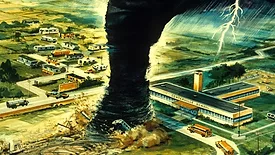Home » Keywords: » natural disaster
Items Tagged with 'natural disaster'
ARTICLES
Enterprise Services
In natural disasters and crisis situations, strong cybersecurity posture is an essential part of business continuity.
Read More
Education & Training
Real-time data and AI are the new weapons against climate disasters
As climate change intensifies extreme weather, the need for intelligent emergency systems becomes even more critical.
April 11, 2024
Special Report
The 2023 Security Benchmark Leaders — Chico's FAS, Inc.
A Holistic Approach to Corporate Security
November 2, 2023
Enterprise Services
It’s time to assess and mitigate climate risk
Security programs can leverage threat intelligence to prepare for and respond to increasing levels of climate risk.
April 6, 2023
Sign-up to receive top management & result-driven techniques in the industry.
Join over 20,000+ industry leaders who receive our premium content.
SIGN UP TODAY!Copyright ©2025. All Rights Reserved BNP Media.
Design, CMS, Hosting & Web Development :: ePublishing














